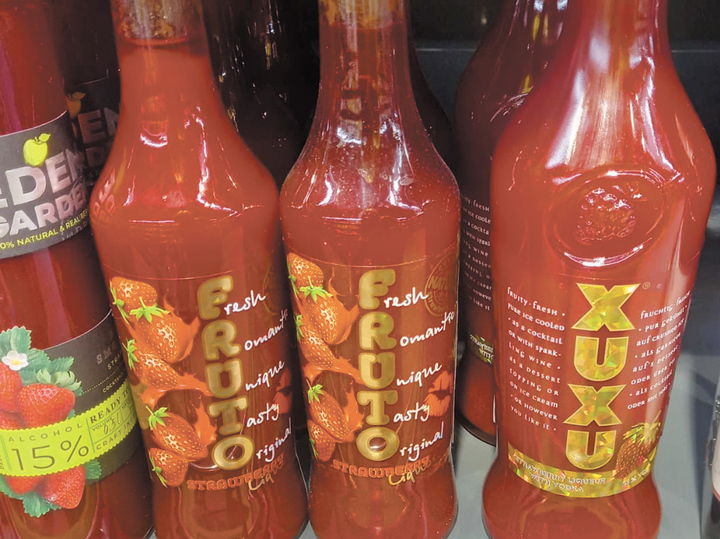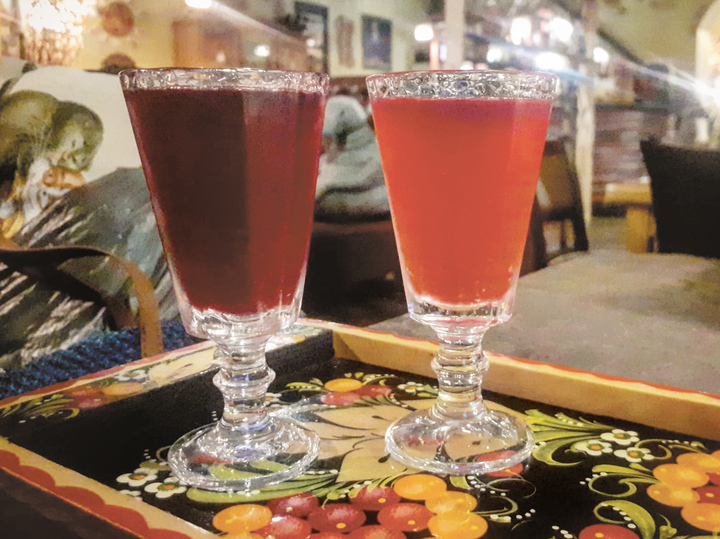“Bottled nearby”: will Russians have to replace whiskey and tequila?
[ad_1]
Option “I’ll look now, it seems like there was another box in the warehouse!” does not work any more. Then there are several scenarios for the development of events: either a specific alcohol supplier continues to bring goods to Russia in a roundabout way (and many thanks to him for that!), or our side will establish parallel imports, or, alas, we will have to look for available alternatives and analogues. And here endless scope opens up for both consumers and producers.
Russian winemaking has long been talked about without skepticism. Over the past 5-7 years, the industry has made great strides and can now satisfy almost any consumer. Russian wineries work with many varieties of grapes – both international ones like the world-famous Cabernet Sauvignon or Riesling, and local (autochthonous) ones, which have very cute names like Shoulder, Pukhlyakovsky or Tsimlyansky Black. Different winemaking regions (terroirs) also make it possible to provide the market with wines of completely different styles – in the hot Crimea they follow in the footsteps of Italy or Spain, while in the Volgograd and Samara regions they make delicate Rieslings and pinot noirs in the German style. Of course, it is reckless to say that we don’t need any foreign wine at all now – after all, every wine-producing country in the world has its own unique varieties for which there are connoisseurs – but at the basic level, the Russian consumer’s demands for wine are more than satisfied .
Let’s talk about strong
The cognac issue was resolved immediately and almost painlessly. In the southern republics of the former USSR – in Armenia, Georgia and Azerbaijan – cognac production has long been established, and some varieties of Armenian cognacs are recognized as no worse than French ones. In addition, cognac appears almost everywhere where wine production exists, which means that in most wine-making regions of Russia (Crimea, Krasnodar Territory, Dagestan) the production of cognac and grape distillates, analogues of grappa and chacha, has already been launched.
Everything else remains – a virtually endless list of alcoholic drinks that have nothing to do with grapes or with simple, understandable Russian vodka. Whiskey and rum, gin and tequila, Calvados and schnapps, vermouths and bitters, aperitifs and liqueurs… As Ruslan Bragin, a member of the guild of marketers, said in a conversation with an MK correspondent, the current state of affairs in the alcohol market is ambiguous – some drinks cannot be replaced, and others successfully found an alternative or other supply routes.
— There are drinks that cannot be replaced: first of all, we are talking about unique geographical names. Bourbon, Calvados, Armagnac – all these are drinks that have been created for centuries, which require unique soils and certain raw materials, and no import substitution is in principle possible here. Just like French champagne from Champagne,” says Bragin. — Then the question is open: you can try to make your own drink “based on” a famous one. Russia has apples, lots of them, and we could produce “something like Calvados.” However, first you need to figure out: is this necessary? A tiny number of people in Russia have tried Calvados, but even fewer like it and regularly buy it – approximately 0.01% of consumers. In the same way, schnapps can be made from raspberries or pears if there is a demand for it. Since a crisis is a time of opportunity, someone will be able to fill this niche. The main thing is that there is a buyer.
The easiest way, according to Bragin, is to establish import substitution for gin – this scheme has already been mastered by the majority of alcohol factories in the Russian Federation. Of course, local Russian gin is made according to a simplified scheme, and it differs from English. However, considering that gin is a drink that is used primarily in cocktails, this is not so critical. In addition, there is the same problem as with Calvados: in our country, 1% of consumers have tried and drunk gin. Therefore, it is easy to do, but the question remains who needs it – and whether it is worth starting the process for such a small number of potential buyers.
It is much more difficult to establish local whiskey production. Previously, whiskey distillate was brought to Russia in special containers and diluted on site to the required proportion – this story is not new. Now politics has intervened in this process. The fact is that Irish whiskey is very popular in Russia, and the Irish government subsidizes distilleries so that they refuse to supply to the Russian Federation, thus compensating producers for lost profits. However, not all distilleries receive such a subsidy, and some continue to import. A separate issue is the price: in 2023, whiskey has risen in price by 50%.

Alternative development paths are to switch to whiskey from India, China, Slovenia or France (imported from there). By the way, India still has quite a good school of whiskey production from the British colonial past, so they can close the inexpensive segment of the market even on their own.
Tequila has an equally ambiguous story. According to Mexican law, it is forbidden to export pure agave distillate from the country: it must be mixed 51% with regular grain alcohol in order to be able to bottle it outside the country. If we agree with Mexico on the purchase of such raw materials, then Russian factories will be able to bottle tequila here – and the issue will be resolved. But again, it remains to be seen how in demand such tequila will be on the Russian market and whether it’s worth the effort.
— We must not forget that not all consumers are gourmets, aesthetes and connoisseurs. There are a minority of them, these are residents of Moscow and St. Petersburg. The average consumer votes with rubles. If imported whiskey or gin becomes too expensive for him, he will find an alternative,” continues Bragin. — The psychological aspect cannot be discounted: during periods of crisis, the anxiety of the population always increases, and now, since February 2022, the growth in alcohol consumption is showing plus 6%. Vodka sales increased by 7%. If a consumer just needs alcohol, he will buy what he can afford. Let’s face it: even vodka is a little expensive for some people.
German liqueur
Mtsensk district
In the last few months, a very interesting new phenomenon can be noticed on the shelves of alcohol departments – next to bottles of world-famous imported drinks there are very similar (painfully similar!) ones. Of course, under a different name – produced in Russia or in friendly countries. And their prices are much more tempting: say, if a bottle of German strawberry liqueur of a famous brand costs 2,000 rubles today, then the Russian equivalent in a similar bottle costs 300–400 rubles. An equally popular liqueur with the aroma of bitter almonds costs 1,800 rubles, and the Russian analogue costs 450 rubles.
At first they appeared in chain supermarkets in small Russian cities, but gradually – by the summer of 2023 – they reached Moscow. Inexpensive “alternatives” to branded drinks are presented primarily among liqueurs, but a similar picture has already formed on the shelf with vermouths and aperitifs-bitters. Although, by the way, Italy, the main producer and supplier of such drinks, has no intention of leaving the Russian market. Prices, of course, have risen.

A natural question: is it even possible to drink such liquids?
— Let’s start with the main thing: it’s safe. If there is a tax stamp on the bottle and if the drink ends up on the shelf of a large supermarket chain, then there will be no harm from it. In the production of counterfeit products, replicas of counterfeit well-known brands can sometimes be found in five-liter plastic canisters; as a rule, they are produced on the basis of a concentrate of fragrances and additives with ethyl alcohol. “They can be dangerous to the health of consumers,” Ruslan Bragin instructs consumers. — Well, such copy drinks can be called generics or replicas. They may be less tasty, of course. Connoisseurs will feel the difference. In general, it’s something like with the Chanel bag and numerous imitations in the mass market. Our marketers are inspired by imports, so they strive to do what will attract the buyer. If the bottles are even slightly different, from the point of view of copyright everything is supposed to be correct. Although I’m unlikely to be wrong if I say that copyright compliance with Western manufacturers has now become much more liberal, so you shouldn’t be surprised at bottles that are “confusingly” similar.
The expert added that this phenomenon should not be given too much importance: since parallel imports are flourishing, true connoisseurs will almost certainly be able to buy a bottle of the “cunning” drink they need, like Campari – in the small quantities in which they are consumed, they will continue to be imported. It must be remembered that approximately 3% of Russians drink cocktails, and their requests can easily be satisfied even under sanctions.
The comparison with Chanel handbags is indeed a good one, because the operating principle is the same. Russian manufacturers – and it doesn’t matter whether it’s alcoholic beverages, clothing or cosmetics! — once again we chose the beaten path: not to come up with something of our own, unique, but to make it according to someone else’s patterns “as if it were foreign” and “our answer to the brand.” Although it is in the strong alcohol segment that an alternative development path would be natural – for example, your own brand can and should be built on traditional Russian tinctures and liqueurs, which are actively produced in many regions (especially in the northern ones). For example, bird cherry liqueur from Vologda may well take its place in the galaxy of bitters on which cocktails are made, and lingonberry or sea buckthorn liqueurs could well lay claim to the role of unique liqueurs. After all, if Italy managed to make a world-famous brand from limoncello (naturally for a country where there are countless lemons!) or vermouths aged with unique Mediterranean herbs, then why can’t Russia make its own brand from sea buckthorn liqueur or tinctures with herbs from the middle zone?
[ad_2]
Source link






